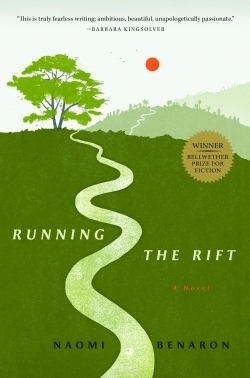Running the Rift
Located on the African continent and bordered by Burundi, Republic of Congo, Uganda, and Tanzania, Rwanda has a centuries-long history of internal conflict. Two of the three main social groupings, Hutus and Tutsis, have swapped control of the country by rebellion and military coup. The rebel force calling itself the Rwandan Patriotic Front (RPF) initiated a civil war in 1990. An uneasy peace was negotiated between the Hutu-majority government and the RPF, but the deaths of the presidents of Rwanda and Burundi in April 1994 sparked what is now known as the Rwandan Genocide. Extremist Hutus are estimated to have slaughtered between 500,000 and one million Tutsis and moderate Hutus in one hundred days. The RPF renewed their rebellion and assumed power over Rwanda in July 1994.
Into this maelstrom of rebellion and genocide falls Jean Patrick Nkuba , a young Tutsi student and runner who’s got his sights set on winning gold at the next Olympics. Jean Patrick hears rumors of devastation in other parts of Rwanda, but he believes he’s safe from the violence. On a drive with his coach to the country’s capital of Kigali for a track meet, Jean Patrick sees first-hand what violent opposition has wrought. Still, he believes that the trouble is far away, something for others to worry about. He falls in love with Bea, a university student, and continues to compete in track meets. Not until war arrives at the front door does Jean Patrick accept that his life has changed permanently, that there is no going back. His only choice is to leave his homeland.
Author Naomi Benaron makes good use of her experience as an advocate for African refugees in her community, especially the Rwanda genocide survivors who were able to travel to the US to escape the carnage. Running the Rift is her first novel and the fiction winner of the 2010 Bellwether Prize. In a finely crafted story of dreams, illusions, hard reality, and reaching the other side of fear, Benaron has bestowed upon the world a story that illuminates events on a national scale by showing their effects at the personal level. Jean Patrick and Bea are lovers for whom it’s easy to root right to the final pages; the reader knows what price they’ve paid to be together again. The descriptions of the land, the structures, and the people Jean Patrick experiences are all lovingly drawn in words that pull the reader headlong into the story.
Reviewed by
J. G. Stinson
Disclosure: This article is not an endorsement, but a review. The publisher of this book provided free copies of the book to have their book reviewed by a professional reviewer. No fee was paid by the publisher for this review. Foreword Reviews only recommends books that we love. Foreword Magazine, Inc. is disclosing this in accordance with the Federal Trade Commission’s 16 CFR, Part 255.

